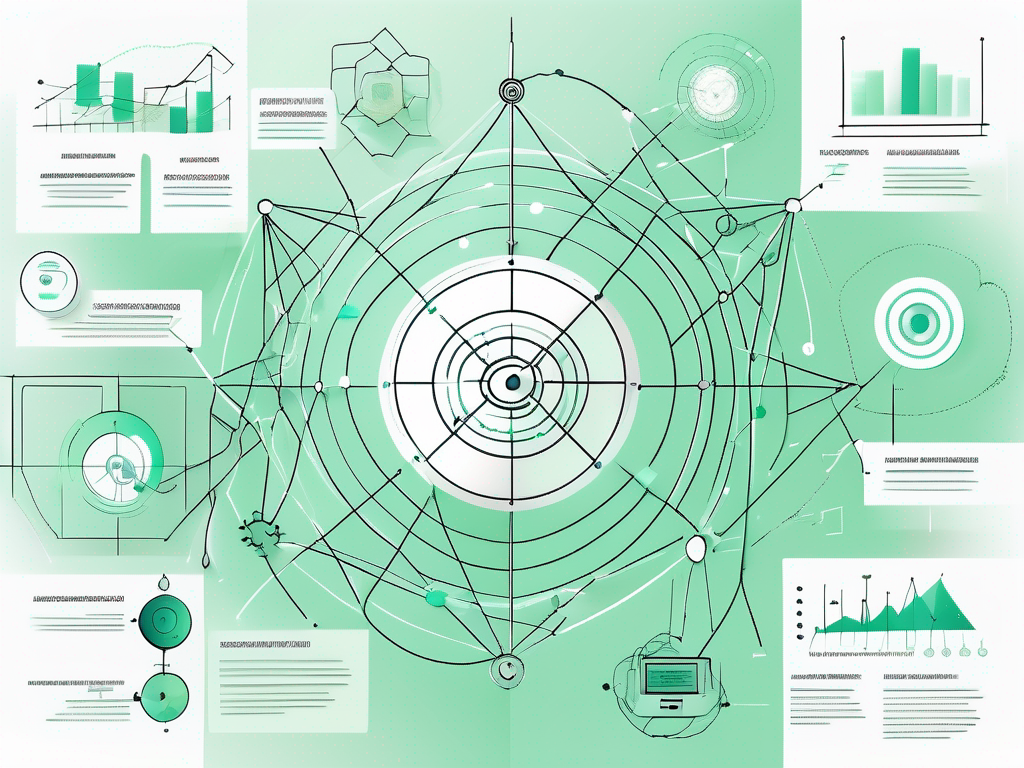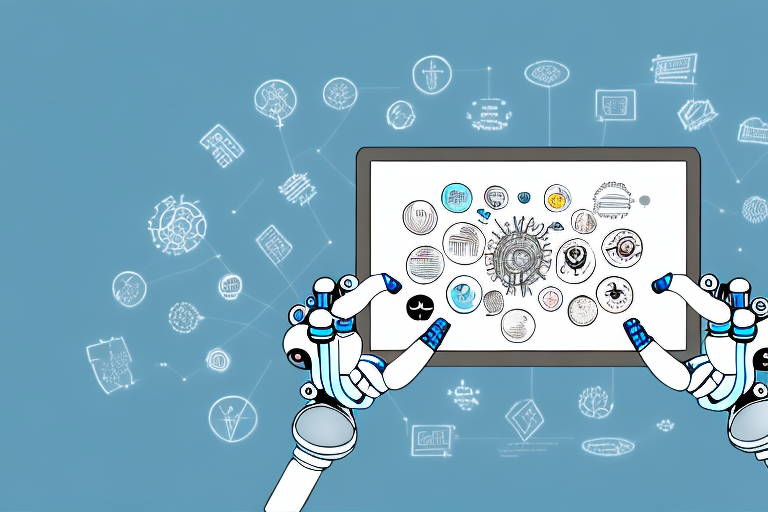.svg)
Scaling Hyper-Personalisation: Tools and Techniques You Need
.svg)

In the fast-paced digital age, personalisation has become a cornerstone of effective marketing strategies. However, as businesses grow, the challenge of maintaining a personal touch with each customer becomes increasingly complex. This is where hyper-personalisation comes into play, leveraging advanced technologies to deliver highly tailored experiences at scale. Understanding the tools and techniques necessary for scaling hyper-personalisation can significantly enhance customer engagement and drive business success.
Understanding Hyper-Personalisation
The Evolution of Personalisation
Traditional personalisation involved segmenting customers into broad categories based on demographic data. While this approach was a step in the right direction, it often lacked the nuance required to truly resonate with individual consumers. Hyper-personalisation takes this concept further by utilising real-time data and advanced analytics to tailor experiences at an individual level. This evolution has been driven by the increasing availability of data and the advancement of machine learning technologies.
Hyper-personalisation is not just about addressing customers by their first name in an email. It involves understanding their preferences, behaviours, and needs to deliver content, products, and services that are uniquely relevant to them. This level of personalisation can significantly enhance customer satisfaction and loyalty, ultimately leading to increased revenue.
The Importance of Data
Data is the lifeblood of hyper-personalisation. Without accurate and comprehensive data, it is impossible to deliver the tailored experiences that customers expect. Businesses must collect data from a variety of sources, including online interactions, purchase history, and social media activity. This data must then be analysed to uncover insights into customer preferences and behaviours.
However, collecting data is only half the battle. Businesses must also ensure that they are using this data responsibly and ethically. With increasing concerns about privacy and data security, it is crucial to be transparent with customers about how their data is being used and to implement robust security measures to protect it.
Tools for Scaling Hyper-Personalisation
Customer Data Platforms (CDPs)
Customer Data Platforms are essential tools for managing and analysing customer data. They allow businesses to collect data from multiple sources and create a unified customer profile. This comprehensive view of the customer enables businesses to deliver highly personalised experiences across all touchpoints.
CDPs also provide advanced analytics capabilities, allowing businesses to segment their audience and predict future behaviours. This enables more targeted marketing efforts and helps businesses to anticipate customer needs before they arise. By integrating with other marketing tools, CDPs can automate the delivery of personalised content, ensuring that each customer receives the right message at the right time.
Artificial Intelligence and Machine Learning
Artificial Intelligence (AI) and Machine Learning (ML) are at the heart of hyper-personalisation. These technologies enable businesses to analyse vast amounts of data quickly and accurately, uncovering insights that would be impossible to detect manually. AI and ML can identify patterns in customer behaviour, predict future actions, and personalise content in real-time.
For example, AI-powered recommendation engines can suggest products or content that are most likely to interest a particular customer, based on their past interactions and preferences. This level of personalisation can significantly enhance the customer experience and increase conversion rates.
Marketing Automation Platforms
Marketing Automation Platforms are another crucial tool for scaling hyper-personalisation. These platforms allow businesses to automate repetitive marketing tasks, freeing up time and resources to focus on more strategic initiatives. By integrating with CDPs and other data sources, marketing automation platforms can deliver personalised content at scale, ensuring consistency across all channels.
Automation also enables businesses to respond to customer actions in real-time, delivering timely and relevant messages that enhance the customer journey. This can lead to increased engagement and higher conversion rates, as customers receive the information they need at the moment they need it.
Techniques for Effective Hyper-Personalisation
Segmentation and Targeting
Effective segmentation and targeting are critical for successful hyper-personalisation. By dividing customers into smaller, more specific groups based on their behaviours and preferences, businesses can deliver more relevant content and offers. This not only improves the customer experience but also increases the likelihood of conversion.
Advanced segmentation techniques, such as behavioural and psychographic segmentation, allow businesses to go beyond basic demographic data. By understanding the motivations and attitudes of their customers, businesses can create more compelling and personalised marketing messages.
Dynamic Content Personalisation
Dynamic content personalisation involves tailoring content in real-time based on customer data. This can include personalised product recommendations, customised email content, and personalised website experiences. By delivering content that is relevant to the individual customer, businesses can increase engagement and drive conversions.
Dynamic content personalisation requires a deep understanding of customer data and the ability to deliver personalised experiences across multiple channels. Businesses must ensure that their content is consistent and relevant, regardless of where the customer interacts with the brand.
Omnichannel Personalisation
Omnichannel personalisation involves delivering a seamless and consistent experience across all customer touchpoints. This requires integrating data from multiple sources and ensuring that personalised content is delivered consistently across all channels, including email, social media, and in-store interactions.
By providing a cohesive experience, businesses can build stronger relationships with their customers and increase brand loyalty. Omnichannel personalisation also allows businesses to reach customers wherever they are, ensuring that they receive the right message at the right time.
Challenges and Considerations
Data Privacy and Security
One of the biggest challenges of hyper-personalisation is ensuring data privacy and security. With increasing concerns about data breaches and privacy violations, businesses must be transparent about how they collect and use customer data. Implementing robust security measures and adhering to data protection regulations is essential to maintaining customer trust.
Businesses must also consider the ethical implications of using customer data for personalisation. It is important to strike a balance between delivering personalised experiences and respecting customer privacy. By being transparent and giving customers control over their data, businesses can build trust and foster long-term relationships.
Balancing Personalisation and Automation
While automation is essential for scaling hyper-personalisation, it is important to maintain a human touch. Over-reliance on automation can lead to generic and impersonal experiences, which can alienate customers. Businesses must find the right balance between automation and personal interaction to deliver truly meaningful experiences.
By combining automation with human insight, businesses can create personalised experiences that resonate with customers on an emotional level. This requires a deep understanding of customer needs and preferences, as well as the ability to adapt and respond to changing customer behaviours.
Future Trends in Hyper-Personalisation
Increased Use of AI and Machine Learning
The use of AI and machine learning in hyper-personalisation is expected to increase significantly in the coming years. These technologies will continue to evolve, enabling businesses to deliver even more personalised and relevant experiences. As AI becomes more sophisticated, it will be able to understand and predict customer needs with greater accuracy, leading to more effective personalisation strategies.
Businesses that embrace these technologies will be better positioned to meet the growing expectations of their customers and stay ahead of the competition. By investing in AI and machine learning, businesses can unlock new opportunities for personalisation and drive long-term growth.
Integration of Emerging Technologies
Emerging technologies, such as augmented reality (AR) and virtual reality (VR), are also expected to play a significant role in the future of hyper-personalisation. These technologies offer new ways to engage with customers and deliver personalised experiences. For example, AR can be used to create interactive and immersive shopping experiences, while VR can provide personalised virtual tours or demonstrations.
By integrating these technologies into their personalisation strategies, businesses can create unique and memorable experiences that set them apart from the competition. As these technologies become more accessible, they will offer new opportunities for innovation and growth.
Scaling hyper-personalisation requires a combination of advanced tools, effective techniques, and a commitment to ethical data practices. By embracing these elements, businesses can deliver personalised experiences that resonate with customers and drive long-term success.
Related Posts
Let's
Let’s discuss how we can bring reinvigorated value and purpose to your brand.







.svg)